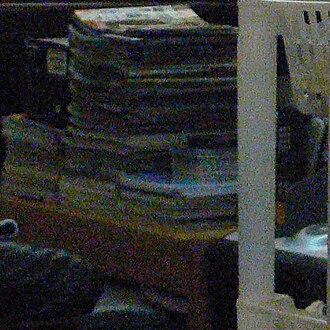
Back Soroll digital Catalan Billedstøj Danish Bildrauschen German Ruido en la fotografía digital Spanish Kohina Finnish Bruit numérique French Rumore (immagine) Italian 이미지 노이즈 Korean Bildestøy NB Szumy (fotografia cyfrowa) Polish

Image noise is random variation of brightness or color information in images, and is usually an aspect of electronic noise. It can be produced by the image sensor and circuitry of a scanner or digital camera. Image noise can also originate in film grain and in the unavoidable shot noise of an ideal photon detector. Image noise is an undesirable by-product of image capture that obscures the desired information. Typically the term “image noise” is used to refer to noise in 2D images, not 3D images.
The original meaning of "noise" was "unwanted signal"; unwanted electrical fluctuations in signals received by AM radios caused audible acoustic noise ("static"). By analogy, unwanted electrical fluctuations are also called "noise".[1]
Image noise can range from almost imperceptible specks on a digital photograph taken in good light, to optical and radioastronomical images that are almost entirely noise, from which a small amount of information can be derived by sophisticated processing. Such a noise level would be unacceptable in a photograph since it would be impossible even to determine the subject.
- ^ Stroebel, Leslie; Zakia, Richard D. (1995). The Focal encyclopedia of photography. Focal Press. p. 507. ISBN 978-0-240-51417-8.